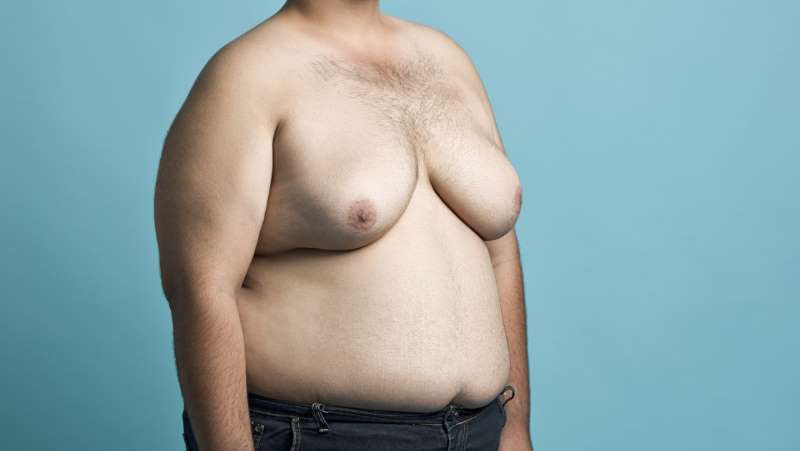Approximately 50% of men suffer from the embarrassment of having large male breasts. Termed `man boobs’, this condition is called gynecomastia. It occurs when the glandular tissues in the breasts become enlarged in males of varying ages.
The problem isn’t just an aesthetic one. Gynecomastia can also cause physical discomfort (such as nipple tenderness).
In this article we will answer some of the most common questions we get asked at Dr McIntosh’s clinic about this condition:
# 1: What Causes Gynecomastia?
Contrary to popular belief, males produce estrogens (`female’ hormones) along with androgens (‘male’ hormones like testosterone). The cause for gynecomastia, simply put, is an imbalance between male and female hormones.
Though not all contributing factors are still known, here are some of them:
- Natural hormonal changes that occur during certain stages of life.
- Ingestion of certain medications for treatment of conditions like depression, ulcer, heart disease, HIV, enlarged prostrate etc.
- Kidney or liver failure.
- Tumors involving the testes, adrenal glands or pituitary gland.
- Use of street drugs like heroin, marijuana and amphetamines.
- Excessive use of alcohol.
- Continued contact with certain herbal products containing tea tree oil or lavender oil.
- Malnutrition or starvation.
# 2: What Are The Common Signs Of Gynecomastia?
Enlarged male breasts is the primary symptom of gynecomastia. Other signs may include rubbery nipples, retraction of the nipples, dimpling of the skin and tenderness or hypersensitivity in the area.
# 3: At What Age Does Gynecomastia Occur?
As the root cause is an increase of estrogens due to hormonal changes, gynecomastia can occur in adolescents during puberty as well as adult men for a host of different reasons as mentioned above.
# 4: At What Age Can One Safely Have Gynecomastia Surgery?
The procedure can be performed from the age of 13 onwards, depending on the severity of the symptoms.
# 5: Who Is A Good Candidate For Gynecomastia Surgery?
Typically, gynecomastia patients have excess fat or an excess of breast tissue, in which case surgery is the best solution.
If you have lost a lot of weight recently, the fullness in your chest area could be residual loose skin around the areola, which can be corrected with an areolar reduction. If the cause is excess accumulation of fat, then liposuction may be a better option instead of surgery.
After an in-person exam, your surgeon will evaluate factors like medical history, smoking history, drug-use history, etc. to declare you a suitable candidate.
# 6: Is There Scarring Afterwards?
The procedure results in minimal scarring, and most of those scars will be concealed in natural contours of the chest. If you also underwent a lift, there may be some scars around the areola and along the lowest part of the breast, but they blend with your natural skin pigment and can be barely noticeable.
# 7: What Does Post Surgery Recovery Look Like?
The recovery rate for each individual after surgery can look different. You can expect to be swollen or bruised for a couple of weeks. There may be some drainage in the first 48 hours after surgery. Your surgeon may have you wear a compression vest for a few weeks to reduce swelling and give you the most optimal results.
# 8: How Much Time Do I Have To Take Off From Work After The Procedure?
The rate of recovery is subjective. However, expect 3-10 days before you can resume work.
# 9: Can I Exercise Post-Surgery?
Refrain from exercise during the first 2-4 weeks. Surgeons usually allow patients to do light cardio in the third week. Be cautious and pay attention to the medical advice you receive during the post-operative period. Avoid exertion in the upper body area, for example, until you get the green signal to return to your full-body workouts.
# 10: Should I Be Embarrassed About Considering Surgery?
Absolutely not! Gynecomastia surgery is pretty common these days because men are feeling more and more empowered to take control of their own appearance, the same way women have traditionally done.
Need more information on gynecomastia surgery? Contact us to set up an initial consultation.

